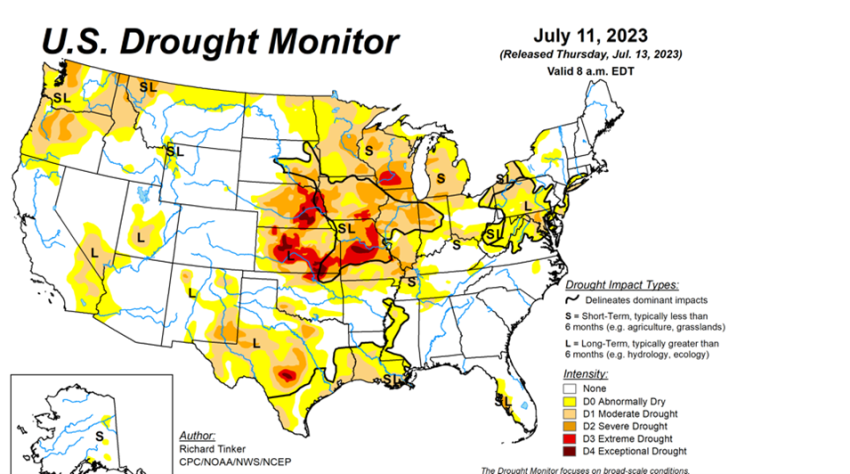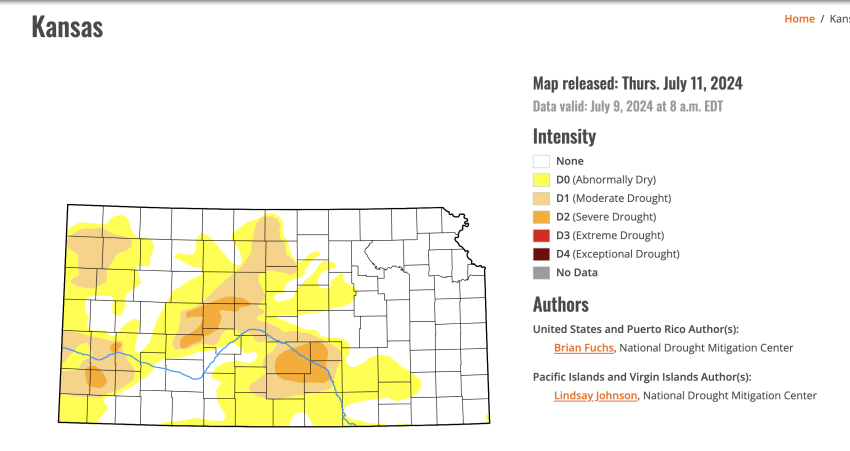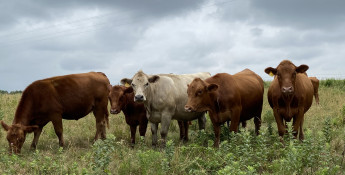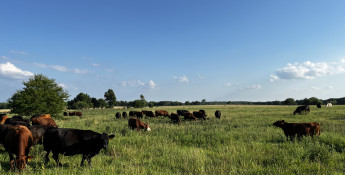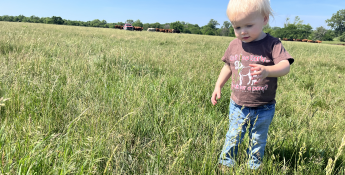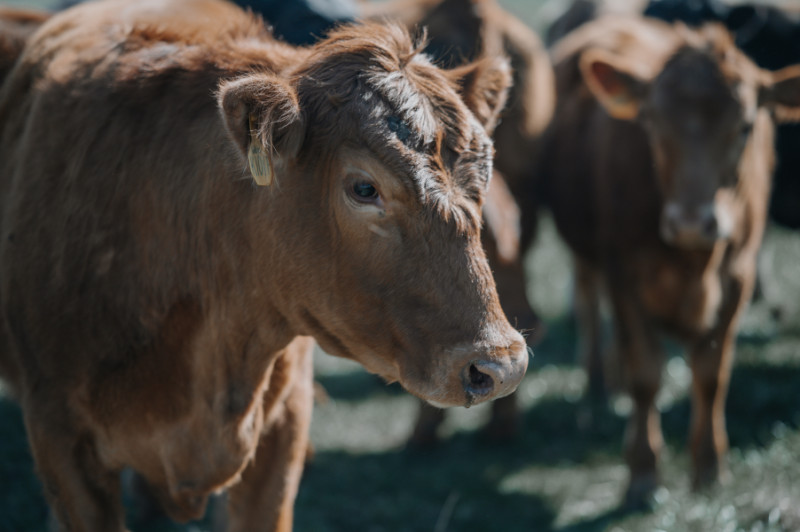By Brandi Buzzard on July 22, 2024
How Abundant Rainfall Transforms Ranching
How full ponds, ample grass and a hay surplus helps ranchers through the year

For the better part of the last 2 to 2.5 years, our little corner of the Wheat State has been plagued by drought. For clarification, drought to a rancher doesn’t necessarily mean “zero precipitation” but essentially below-normal levels. And the more prolonged the absence of rain, the more severe the drought.
As one can see below, much of southeast Kansas was in a severe or extreme drought (orange and red on the graph, respectively) last summer, but we have received blessed relief and are thankfully at average or above as of mid-July. Historically, our theoretical faucet in the sky turns off around this time each year and doesn’t re-open until mid-September; we shall see what lies ahead for us in the next six to eight weeks.
July 11, 2023 - Source: U.S. Drought Monitor
July 11, 2024 - Source: U.S. Drought Monitor
As one can see in the second chart, the whole state is not out of the woods yet – there are substantial areas where rain is still sorely needed, and my prayers are with farmers and ranchers in those areas. But for the purposes of this post, I’ll focus on what an abundance of rain affords us on the ranch.
1. Full ponds
Last year, one of the pastures we lease couldn’t be used as effectively because the pond dried down to almost nothing. The same goes for a creek on our home property. They were pretty much mud pits and many of our other ponds were giving us anxiety as their levels shrunk while we awaited fall moisture (which was less frequent and not as fruitful as we had hoped). But this year, in mid-July, the ponds are full, and we can utilize all of our pastures in our rotational grazing plan. When we are able to use all of our pastures, we can rest each one appropriately after cattle have grazed and give it time to recover and regrow.
2. The ability to run more stockers on our leased pastures
We pay for our leased pasture on a per-acre basis, meaning we pay for the land whether we have it stocked to full capacity or not. When we have lots of rain, that yields lots of grass – we have been able to graze more cattle than last year for the simple fact there is so much grass!
3. Flexibility with harvested forage, aka, hay
Hay is just dried grass that has been cut and baled, so lots of grass leads to lots of hay. And because of the yields we had on our Imiflex (a brand of forage sorghum seed) forage sorghum last year, we had SO MUCH sorghum silage to feed last fall and through the winter. We fed silage all the way into mid-May, which allowed us to feed less hay. Therefore, before ever mowing this year’s hay ground, we still had numerous bales in storage. Making hay and feeding cows is something we are thinking about all year round. So having a hay surplus, on top of all these other listed facts, lends itself to the following:
4. A sigh of relief
Don’t get me wrong, we are going to keep watching the radar and I’ll always take rain when we can get it (I’ve prayed for rain far more often than I’ve prayed for it to dry up), but having ample hay stores, full ponds and a break in the heat makes for happy ranchers and well-fed cattle.
I know it seems like ranchers talk about weather a lot but the simple fact is so much of what we do relies upon Mother Nature, so it becomes almost an unavoidable crutch and pillar in our lives.

